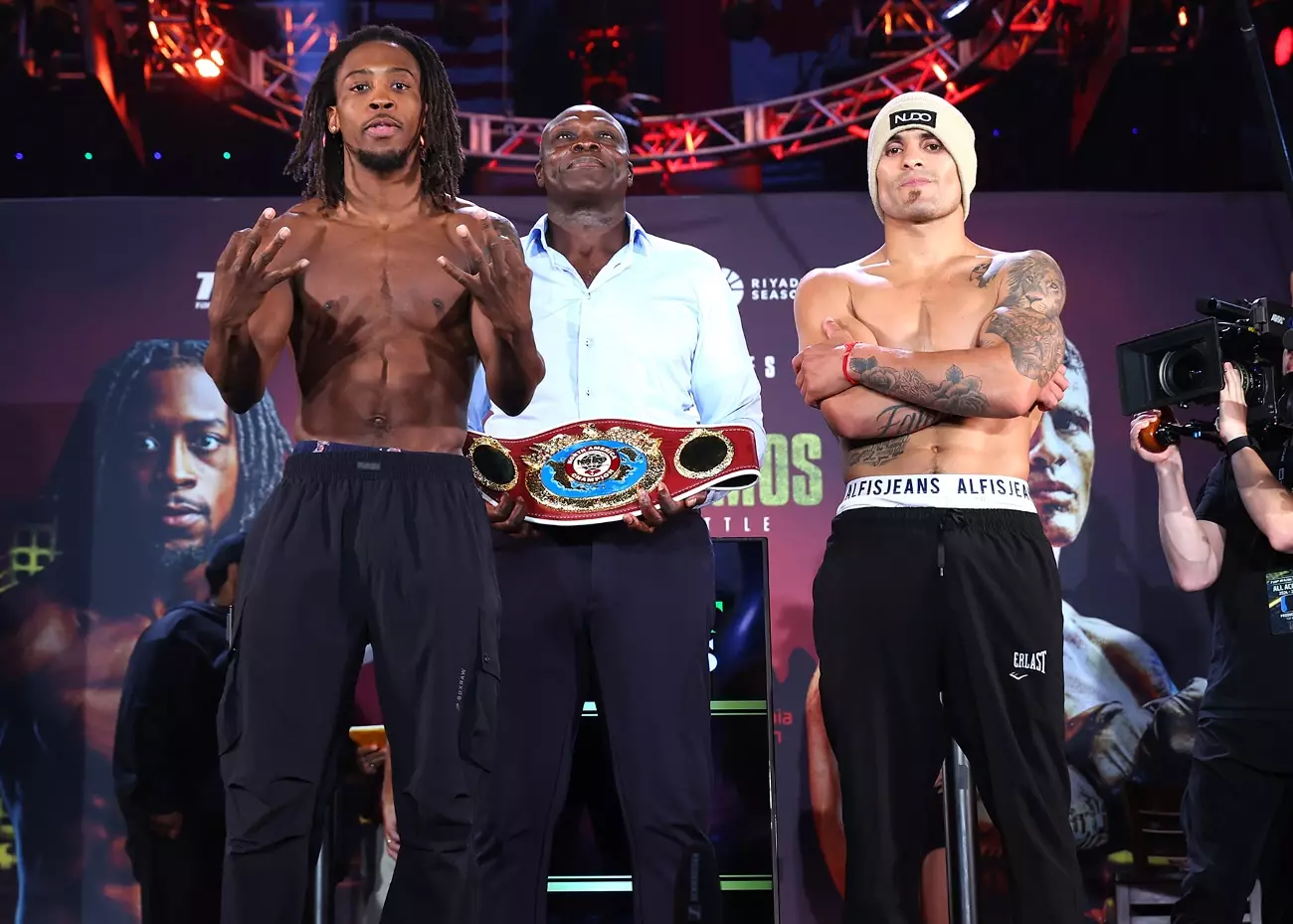The world of boxing often unfolds in dramatic fashion, and the upcoming bout between Keyshawn Davis and Gustavo Lemos is no exception. Set to take place on November 8th at the Scope Arena in Norfolk, Virginia, this fight highlights critical issues not only related to the athletes’ weights but also the broader implications these issues pose in the sport.
Keyshawn Davis (11-0, 7 KOs) successfully weighed in at a respectable 134.2 pounds—well within the lightweight limit. On the flip side, Gustavo Lemos (29-1, 19 KOs) shocked the audience by tipping the scales at a hefty 141.4 pounds, trailing the lightweight limit by a staggering 6.4 pounds. This weight gap has ignited a firestorm of discussions among fans and analysts alike, raising questions about the integrity of the matchup and potential advantages Lemos might leverage.
Facebook, Twitter, and various boxing forums are abuzz with opinions. Many fans speculate that Lemos might have deliberately missed the weight cut to create a strategic edge against Davis. This speculation arises from the traditional understanding that fighters dropping weight may struggle to regain their power in the ring. If Lemos had pushed himself to lightweights’ threshold, he would have risked depleting himself of strength and stamina, presenting an easier target for Davis.
Moreover, the situation paints a portrait of the increasingly complex world of weight classes in boxing. The division of fighters doesn’t only concern raw numbers but is also affected by personal physiology and performance dynamics. In the case of Lemos, who usually fights at light welterweight, the decision to drop to lightweight for this fight was not only ambitious but also wrought with potential pitfalls.
The spectators are divided when it comes to this fight. The reaction is not merely binary; while several support Davis and assert that Lemos should be held accountable for his weight, others express sympathy for the Argentinian fighter. They argue that the weight cut can be a grueling process, and although competitors should arrive ready for battle, the physical demands placed on Lemos might have been excessive. This ambivalence highlights the emotional layer fans add to the sport, often romanticizing fighters’ struggles while maintaining a realistic view of the challenges they face.
Davis addressed the controversy with a blend of confidence and opportunism. He stated, “I’m happy. I’m getting paid more money. The show must go on.” His positivity serves not only as a reminder of his seasoned mentality but also creates an aura of self-assuredness that many young fighters lack.
Conversely, Lemos remained largely silent on his failure to meet the lightweight requirement, offering no explanations or defenses. This silence raises further speculation about his intentions—a lack of communication creates a void filled with theories that often veer into mistrust. In a sport where perception matters as much as performance, this could align more detrimental consequences to his reputation than a simple weight overage.
The upcoming bout is pivotal as it is not just a step for both boxers in their careers, but also a test of their professionalism and preparation methods. For Davis, achieving victory against an uncut Lemos opens avenues for more formidable opponents in a challenging lightweight division. In contrast, a loss may subject him to criticism, particularly around the discourse of weight classes. If Lemos secures a win, however, it casts a shadow on the legitimacy of the battle, as fans could argue he gained an unfair advantage.
Promoters, particularly Top Rank, have been scrutinized for their matchmaking decisions following this weigh-in mishap. The choice to set up Davis against a naturally heavier opponent raises serious questions about their vetting processes for potential challengers. It might be time for promoters to assess more carefully the weight class dynamics, ensuring that matchups are not only exciting but also fair and conducive to the sport’s integrity.
In boxing, the ring often symbolizes a larger battleground where integrity, preparation, and strategy collide. The upcoming fight between Keyshawn Davis and Gustavo Lemos serves as a microcosm of these battles that transcend mere physicality. As anticipation builds towards November 8th, fans are left contemplating not only who will win but also what this encounter signifies for weight management practices and future matchmaking in boxing. The stakes couldn’t be higher, and the conversation is only just beginning.


Leave a Reply